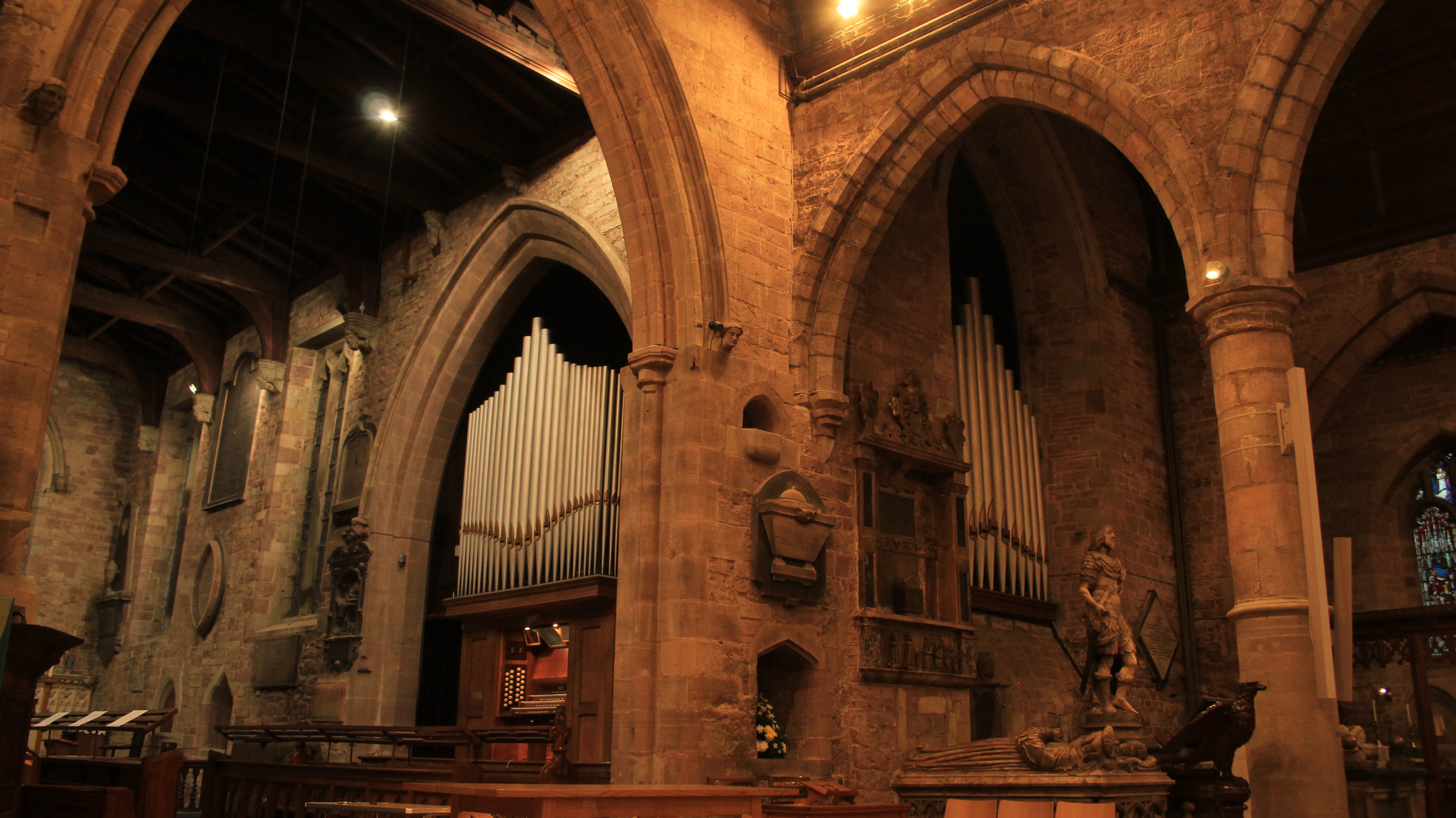
St. Mary the Virgin, Ross-on-Wye
33 Stop, 3 Manual, English Romantic organ built by Hele & Co. 1921
About
Ross-on-Wye, often described as the "Gateway to the Wye Valley," is a market town perched on a sandstone bluff overlooking a wide meander of the River Wye in Herefordshire. The town grew around the 13th-century St Mary’s Church, whose tall spire remains a prominent feature of the skyline. Ross flourished in the 17th and 18th centuries as a centre for local trade and river transport, with the Wye serving as a vital route for trade goods.
An organ is first recorded at Ross in 1726, when it was installed on a gallery in the tower. Fosbroke (1821) notes, “the organ was opened 18th October 1726. The front of it is said to have originally belonged to Salisbury Cathedral.” A Harleian manuscript of 1658 also mentions “an Organ Loft” in the church. The origin of this early case remains uncertain, though links to a 1668 Thomas Harris organ built for Salisbury Cathedral have been suggested.
In 1827, a new organ by Henry Cephas Lincoln of London was erected in a west-end gallery following a successful public subscription. A guide from the time described “a well-toned organ... more compass and power than the former one.” Praised by Samuel Sebastian Wesley, it cost £650 and replaced the 1726 instrument. The Lincoln organ was later moved to a gallery above the south porch in 1862 and then into a new organ chamber, built on the south side of the chancel in 1874 as a gift from Miss Mary Sarah Hall.
The 1827 organ was replaced in 1886 by Eustace Ingram of Hereford, with detailed specifications surviving in local archives. In 1921, Hele & Co. of Plymouth installed the present instrument, gifted by Mrs. Edith Purchas in thanksgiving for the safe return of Ross’s men from the Great War. Originally pneumatic, the action was electrified in 1985 by John Coulson of Bristol.
A major rebuild in 2011 by Trevor Tipple of Worcester restored the instrument and introduced several tonal changes, including a new Great mixture and revoicing of the Swell. The console was also modernised with a new key action and computerised pistons. The project, funded by a private donation in memory of Dr. John Glydon-Jones, ensured the survival of this organ for future generations.
Stoplist
-
Pedal
Sub Bass 32'
Open Diapason 16'
Violone 16'
Bourdon 16'
Principal 8'
Bass Flute 8'
Bombarde 16'
Fagotto 16'
Tromba 8' -
Choir
Stopped Diapason 8'
Flute 4'
Nazard 2 2/3'
Piccolo 2'
Basset Horn 8'
Tremulant
Tromba 8' -
Great
Bourdon 16'
Large Open Diapason 8'
Small Open Diapason 8'
Flauto Traverso 8'
Principal 4'
Harmonic Flute 4'
Fifteenth 2'
Mixture 3 Rks.
Tromba 8' -
Swell
Violin Diapason 8'
Stopped Diapason 8'
Echo Gamba 8'
Voix Celeste 8'
Principal 4'
Mixture 3 Rks
Contra Fagotto 16'
Cornopean 8'
Oboe 8'Tremulant
-
Couplers
Choir to Pedal
Great to Pedal
Swell to Pedal
Swell to Great
Choir to Great
Swell to Choir
Swell Sub Octave
Swell Unison Off
Swell OctaveChoir Octave
-
Combinations
Generals to Swell Toe Pistons
Pedal Combiniations to Great Pistons
Demo Stoplist
-
Pedal
Violone 16'
-
Great
Small Open Diapason 8'
Harmonic Flute 4' -
Swell
Violin Diapason 8'
Principal 4'
Oboe 8'Tremulant
-
Choir
Stopped Diapason 8'
Images
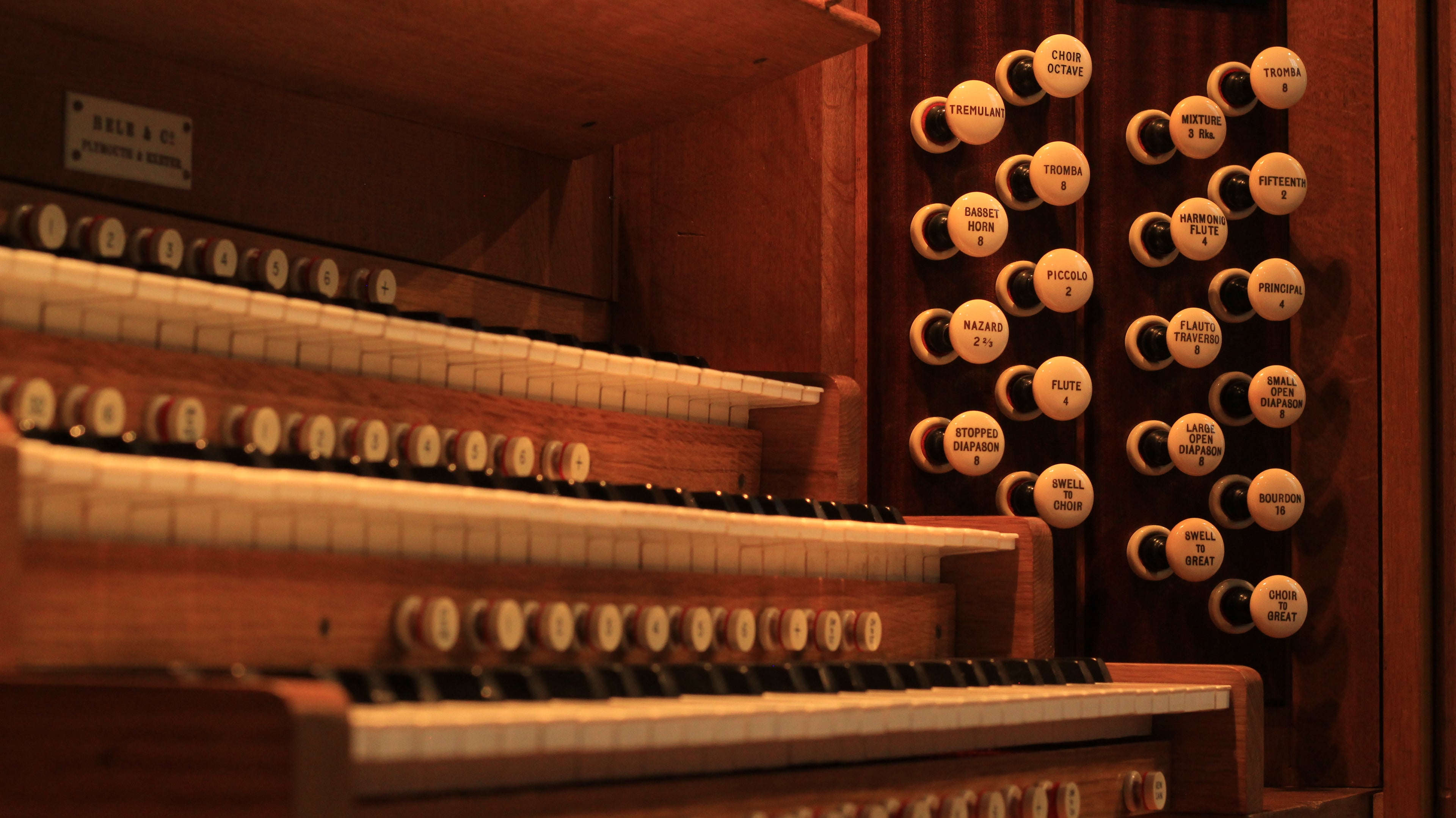
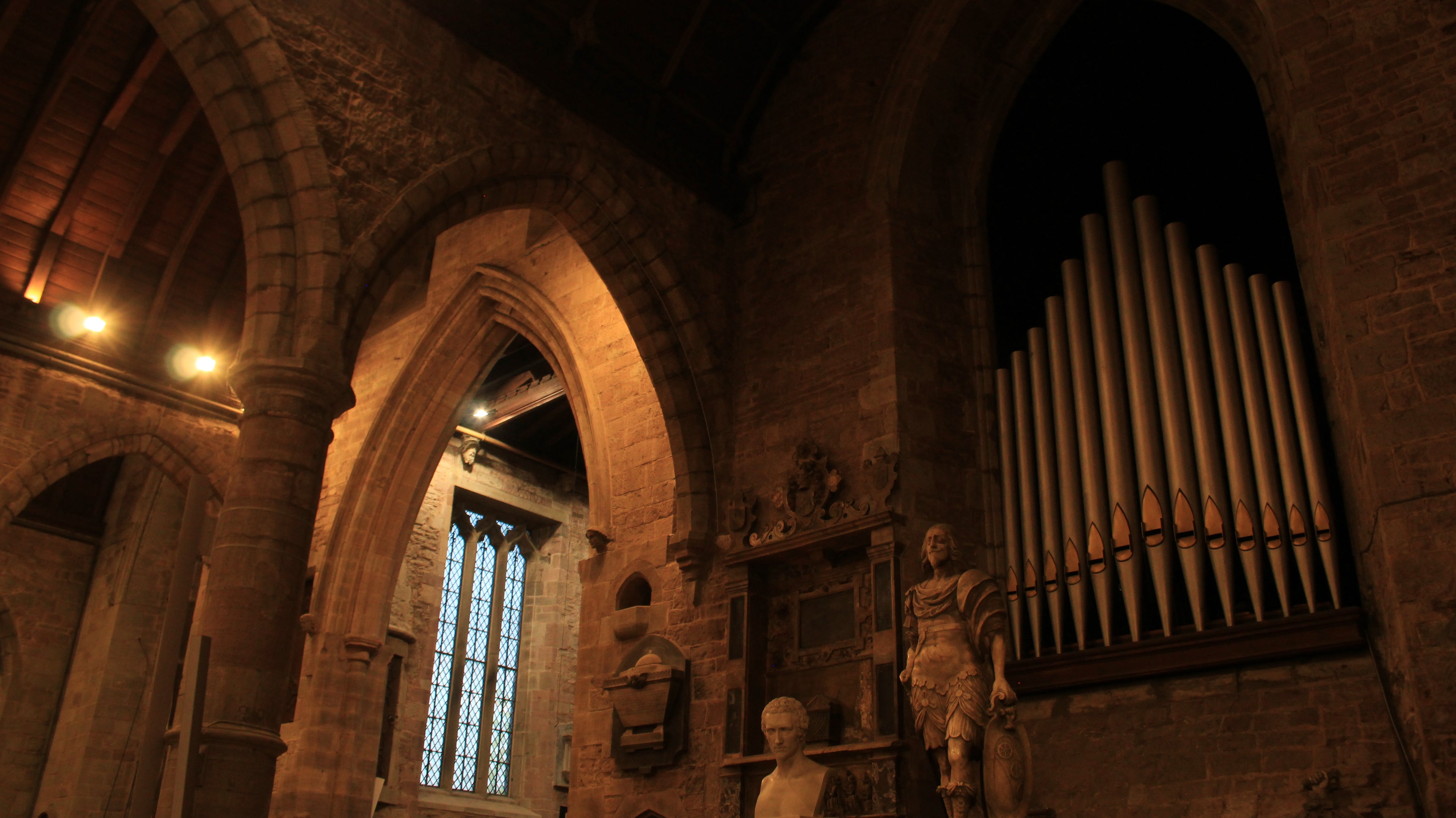
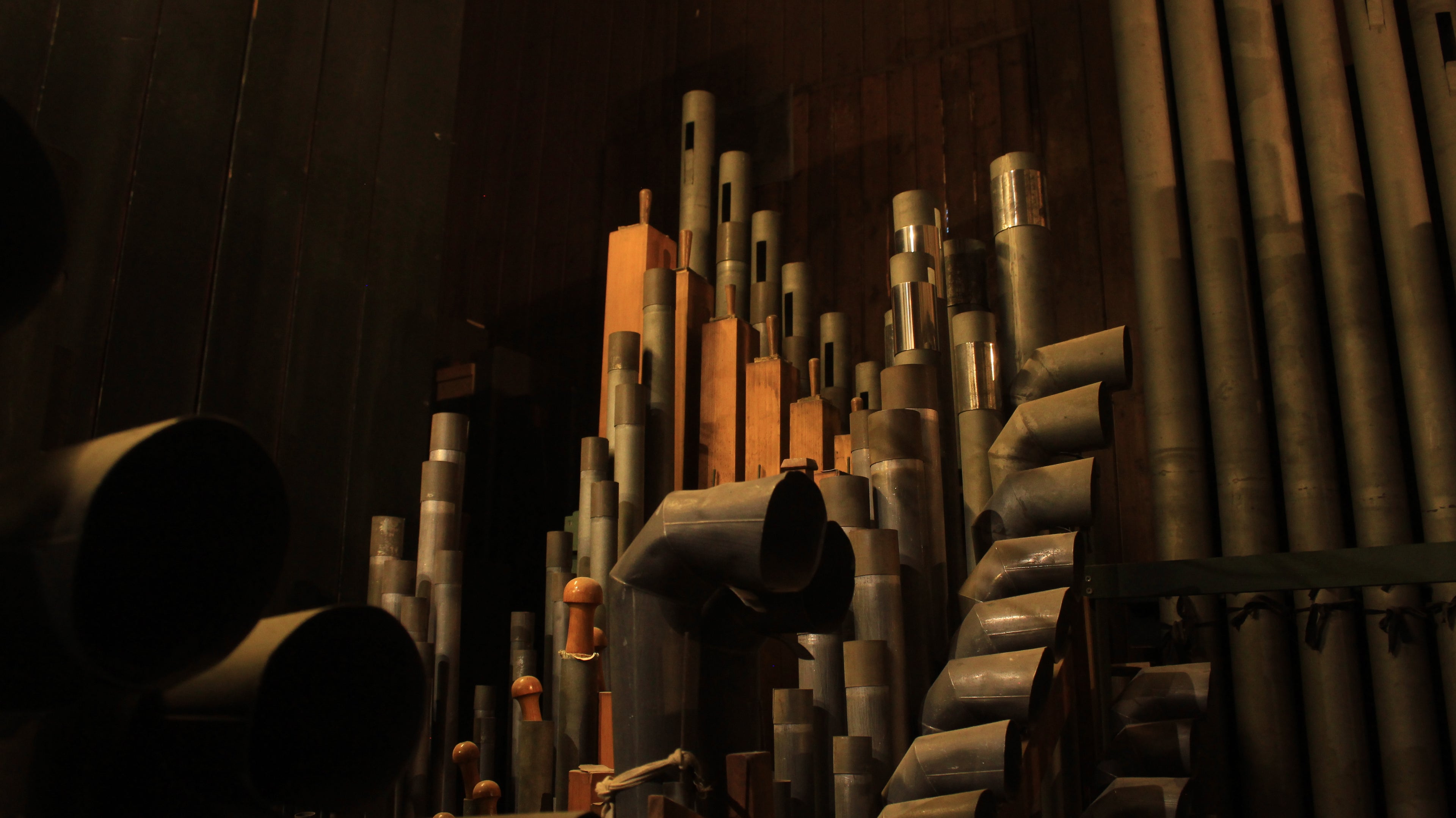
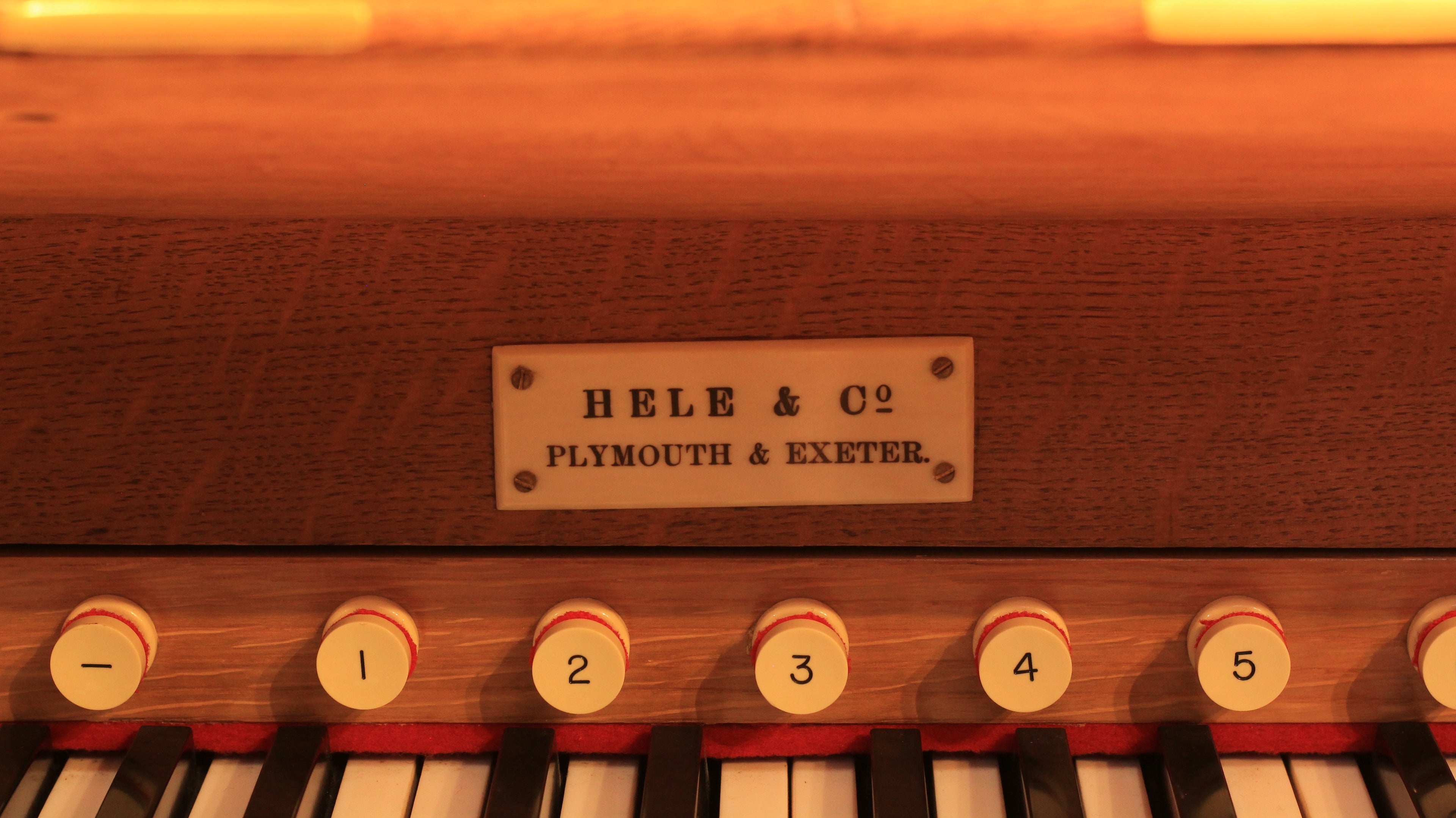
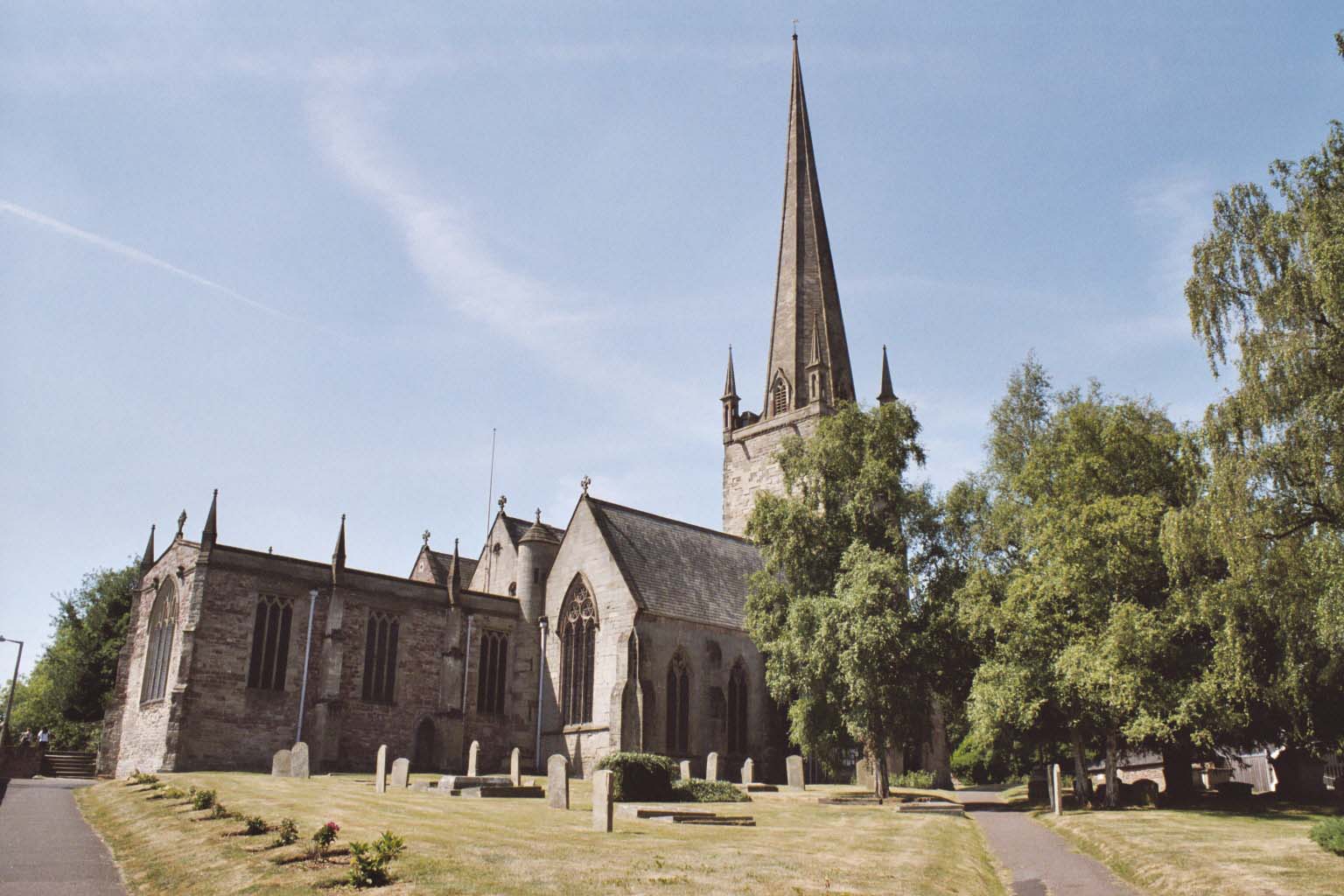
YouTube Demonstration
Screenshots
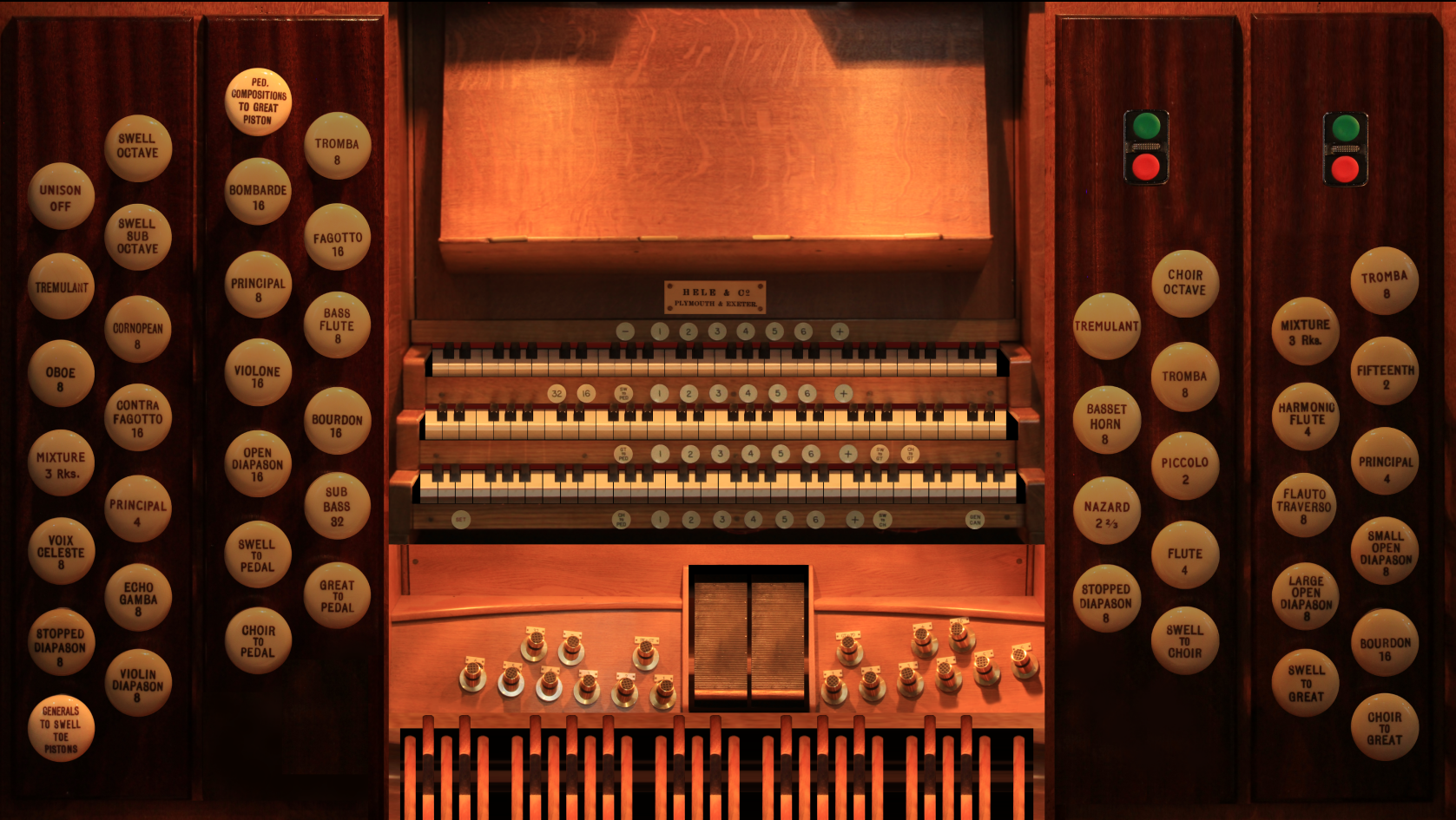
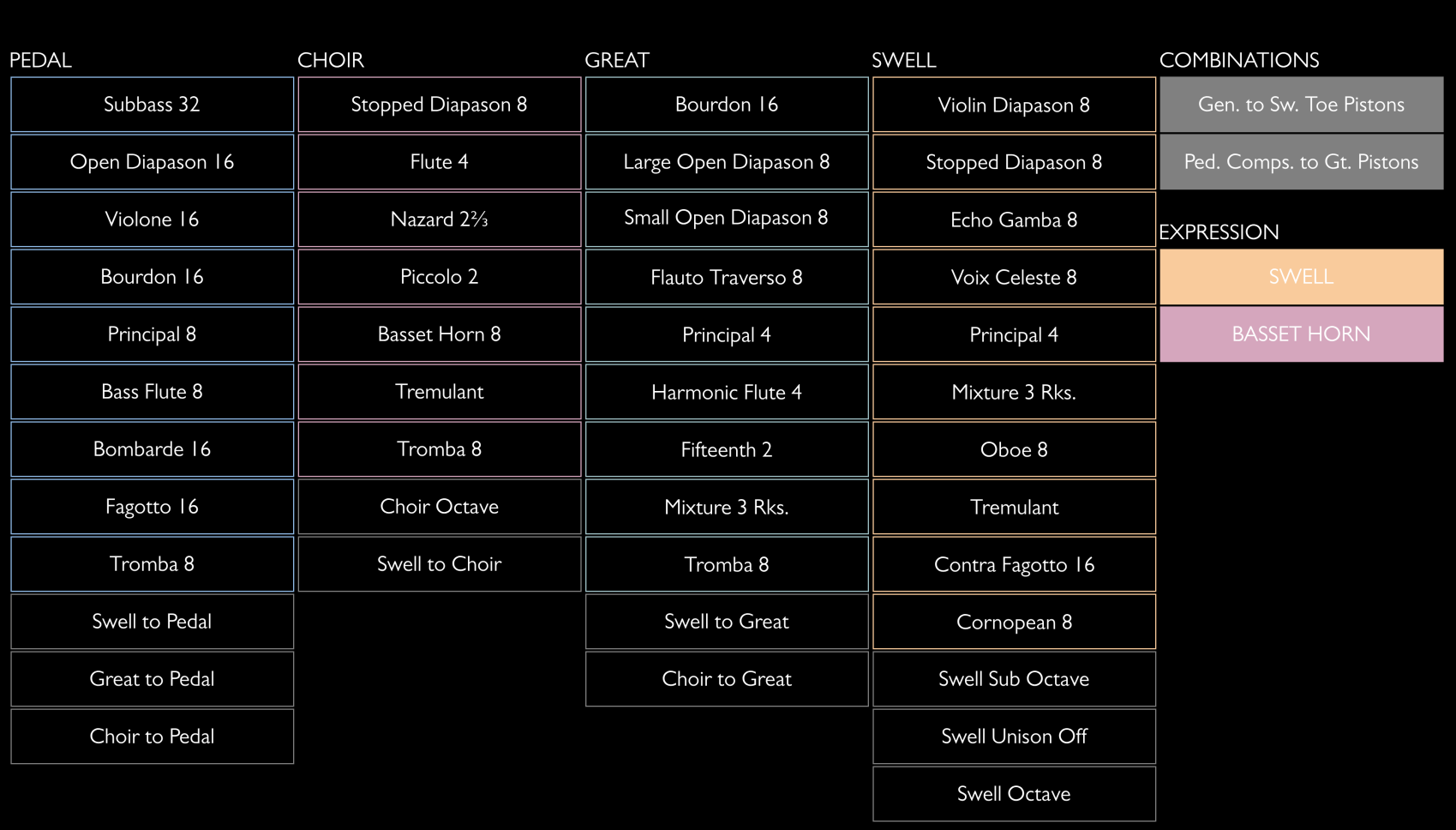
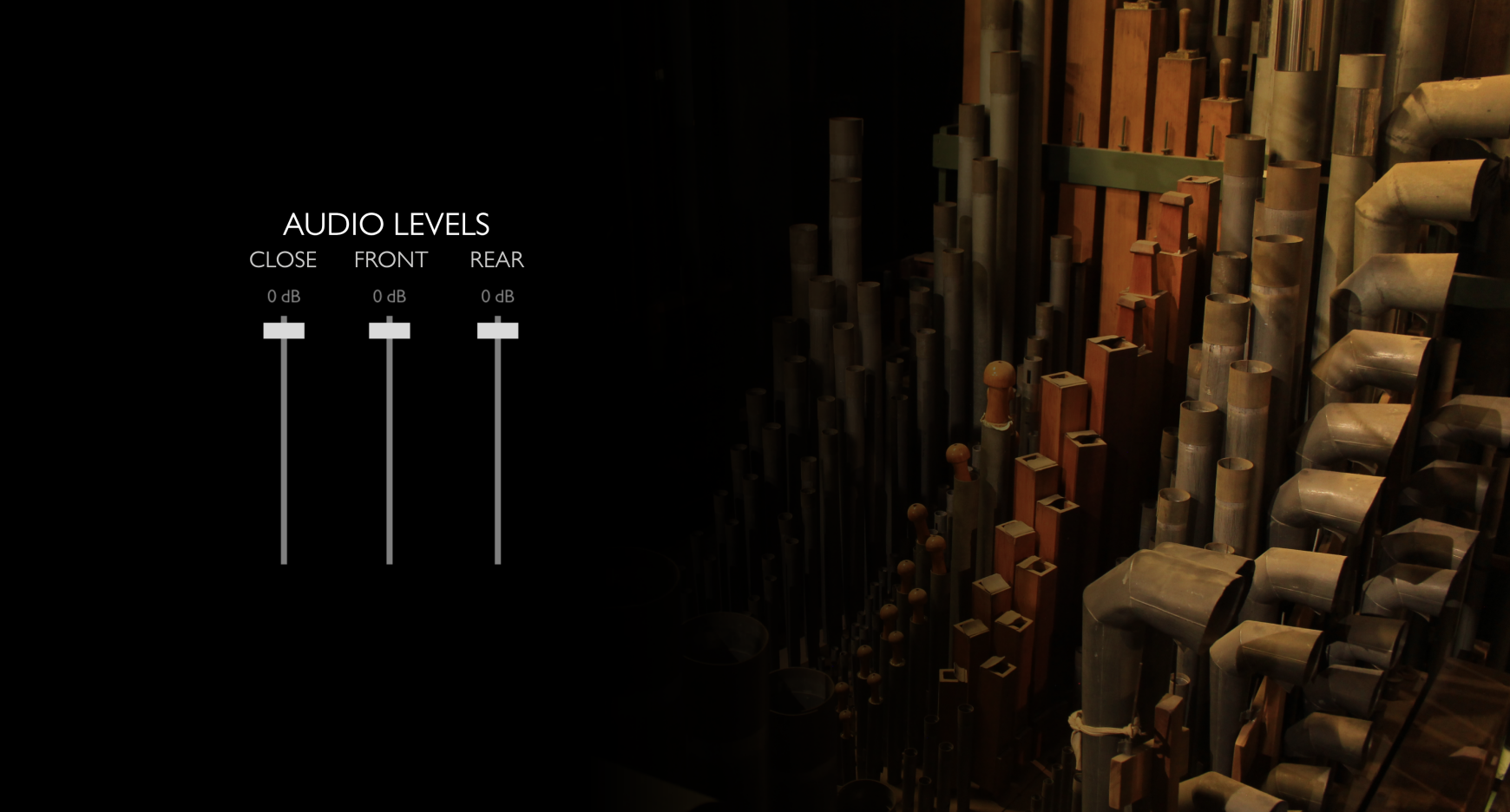
Technical Details
Sample Rate - 48 kHz
Bit Depth - 24-bit
Channels - 6 (x3 Stereo channels - Close, Front & Rear)
Reverb Tail - c. 2.7s
Tremulant Model - Sampled Chromatically except for Swell (Artifically generated)
Compatible software - Hauptwerk Version 4.2 or higher
Memory Requirements (Lossless Compression)
24-Bit, 6 Channels - 30 GB
16-Bit, 6 Channels - 15 GB
24-Bit, 4 Channels - 20 GB
16-Bit, 4 Channels - 10 GB
24-Bit, 2 Channels - 10 GB
16-Bit, 2 Channels - 5 GB
